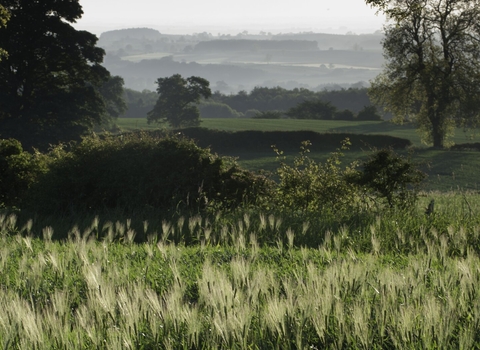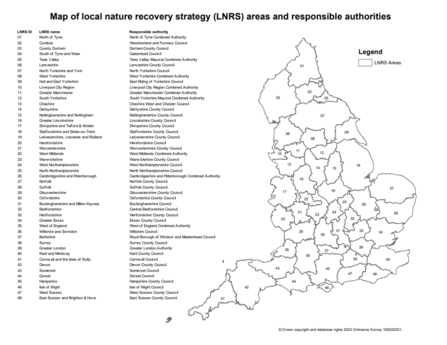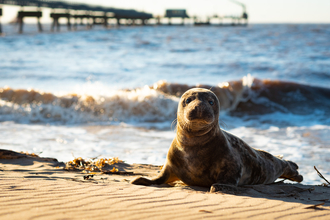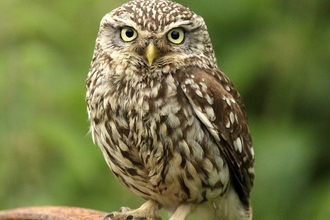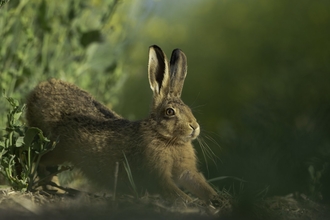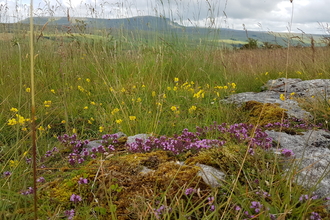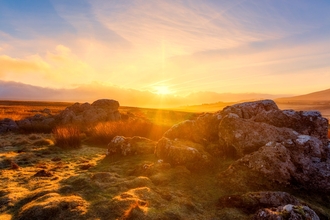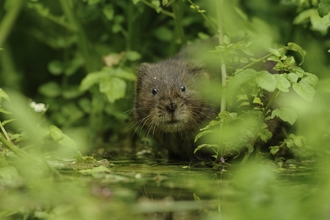Our work with Local Nature Recovery Strategies
Yorkshire Wildlife Trust colleagues are supporting local authorities to create Local Nature Recovery Strategies and attend the four regional groups in Yorkshire.
Why they are important
It is no secret that the UK is one of the most nature-depleted countries in the world. The State of Nature Report 2023 found that one in six species at risk of being lost from Great Britain, and the species studied have, on average, declined by 19% in the UK since monitoring began in 1970.
The Government, via Natural England has therefore charged local authorities to devise strategies that prioritise action for nature.
Everything you need to know
What is a Local Nature Recovery Strategy?
England has been divided into 48 areas, each with its own leading authority. Each authority is responsible for developing a Local Nature Recovery Strategy.
A Local Nature Recovery Strategy is a plan to identify locations in your local region where collectively we can improve nature and provide other environmental benefits, such as carbon sequestration, flood regulation, and access to nature-rich spaces for health and wellbeing.
What will it do?
The Local Nature Recovery Strategy will:
- Agree priorities for nature's recovery in your region.
- Map the most valuable existing areas for nature in your region.
- Set out opportunities for creating and improving habitat for nature and wider environmental goals in your region.
If done well, Local Nature Recovery Strategies will help to direct funding streams, including funding for farmers and land managers.
They will also link with Biodiversity Net Gain, which is a new requirement for planners and builders to ensure habitat for wildlife is left in a better state than it was before any building work began.
They will be vital for organisations and people involved in planning, utilities, major infrastructure plans or caring for green spaces.
How can I get involved?
This is your chance to have a say on nature recovery in your area!
We need your help to ensure the strategy meets the needs of our communities, farmers, businesses and of course our wildlife. We want it to capture nature recovery action taking place already and to reflect future priorities.
There are four regions in Yorkshire: North Yorkshire and York, Hull and East Riding, South Yorkshire and West Yorkshire.
Some regions are asking people to fill out surveys.
- East Yorkshire: Have Your Say Today
Others have mailing lists and webpages you can sign up to in order to learn more:
- West Yorkshire: A Local Nature Recovery Strategy for West Yorkshire
- North Yorkshire: Local Nature Recovery Strategy | North Yorkshire Council
- South Yorkshire: Greener Future - South Yorkshire MCA
What Yorkshire Wildlife Trust wants Local Nature recovery Strategies to be…
We want a wilder Yorkshire, and so we are redoubling our efforts around landscape scale nature recovery across Yorkshire.
With our diverse landscapes across the county and on the coast, we have a huge opportunity for Yorkshire to play more than its part in tackling the biodiversity crisis. We want Yorkshire to overperform against the national/local targets both on quantity of nature, and the quality of that nature.
Our vision
We want Yorkshire to have four LNRS’s which are among the best in the country. We want these LNRS’s to be:
Ambitious: we want Yorkshire LNRS to accelerate nature’s recovery at landscape scale to bring wildlife back everywhere. This will be assessed on how each LNRS embodies the Lawton principals of more, bigger, better and joined up.
Accountable: we want LNRS to be adopted by all relevant local authorities to ensure they inspire a change in the awareness and accountability for nature’s recovery felt by their Cllrs, officers and residents.
Actioned: we want to see LNRS embedded across all policies and decision-making, such as Biodiversity Net Gain, Environmental Land Management schemes, local development plans, and in new policies going forward.
Connected: our local environments are part of much wider ecosystems and we want to see our LNRS’s reflecting a nature recovery network across the UK. They should interconnect with neighbouring plans and recognise their part in networks of designated and protected areas, including stretching into the North Sea. We want to see every LNRS to have a ‘beyond our boundaries’ section.
Community led: we know that nature and biodiversity are hugely impacted by human activity. Equally we know that nature’s recovery will be driven by people. We want to see as many people as possible included in the process of developing the LNRS.
Continuous: long-term thinking changes short term decisions, so we would like to see ambitions for the long term in the LNRS to drive 30% of land and sea to be positively managed for nature by 2030 on the way to 50% by 2050. We would like to see a commitment by the authorities to review, refresh and reiterate the importance of the LNRS on a regular basis.

